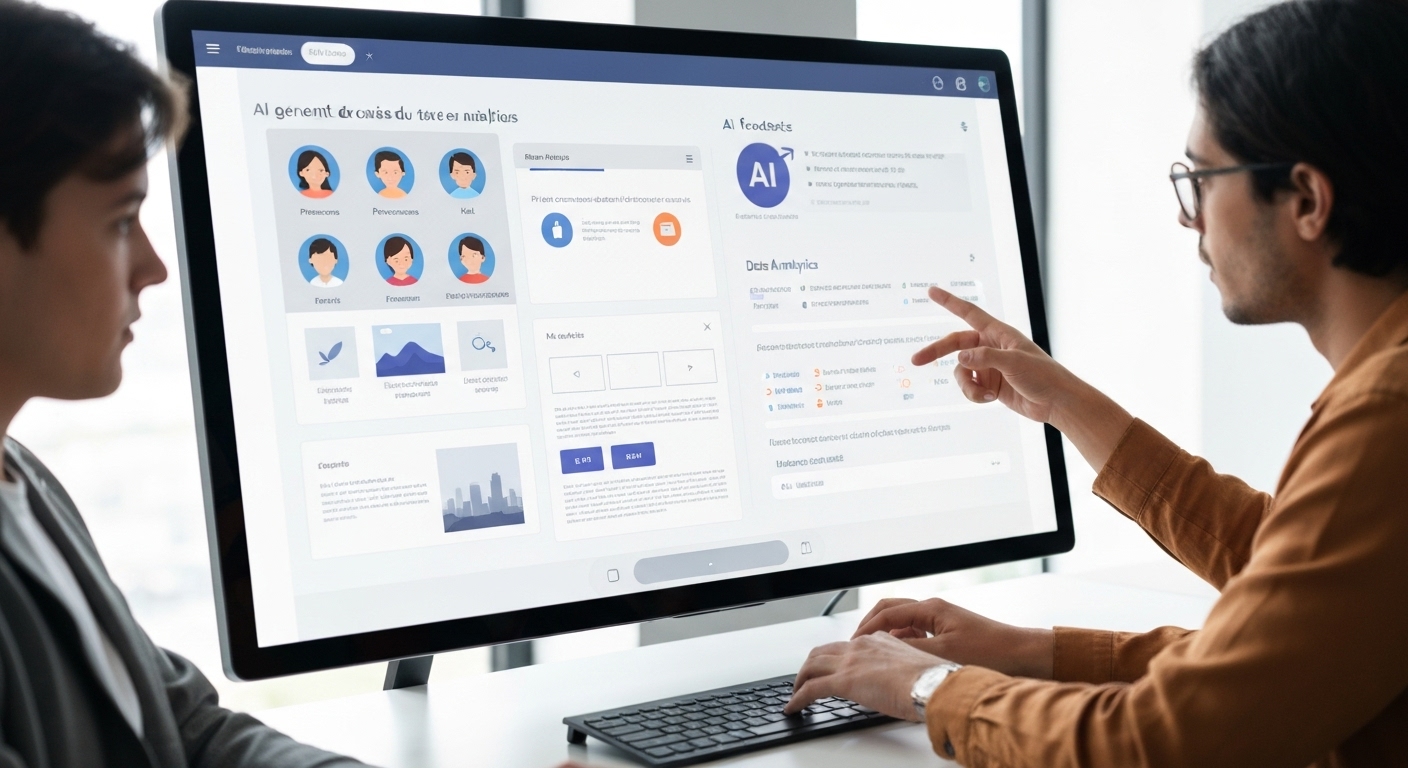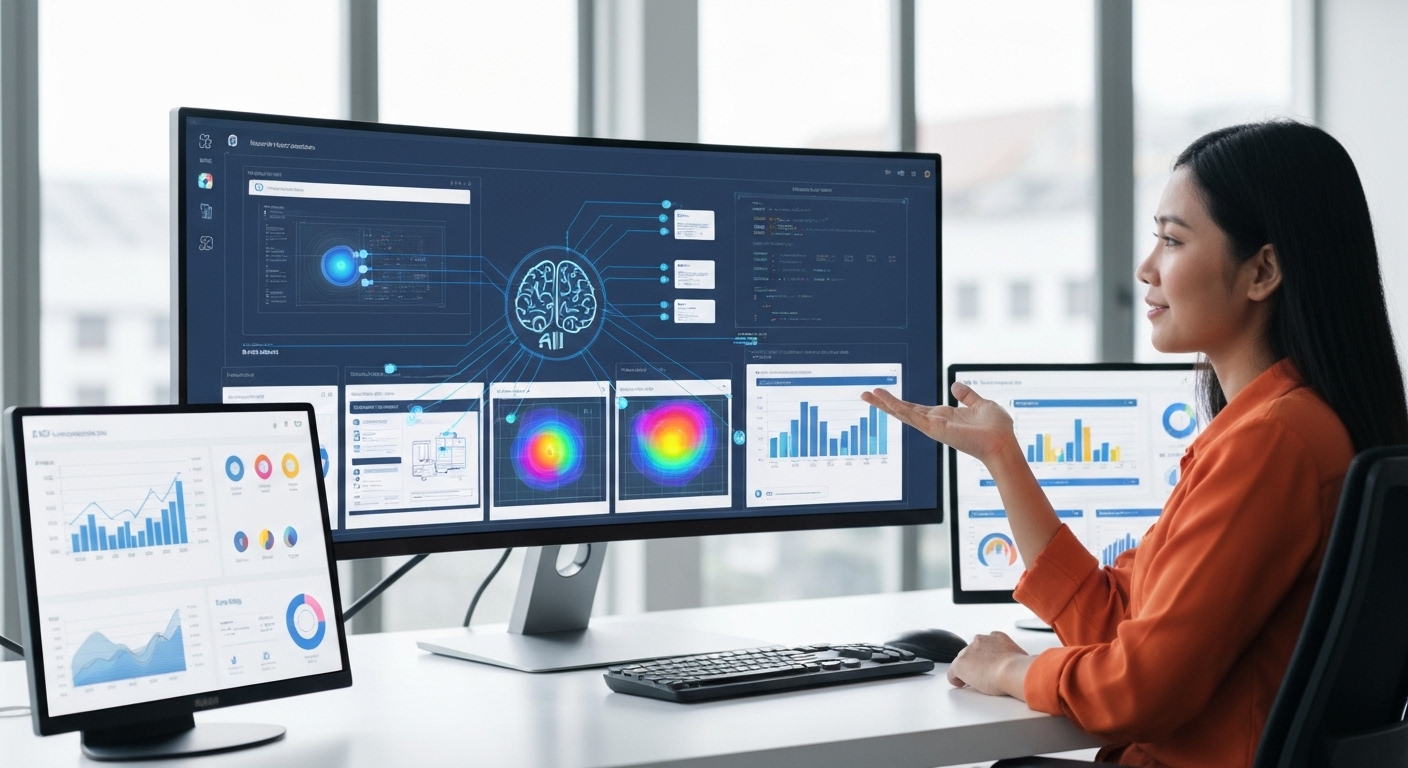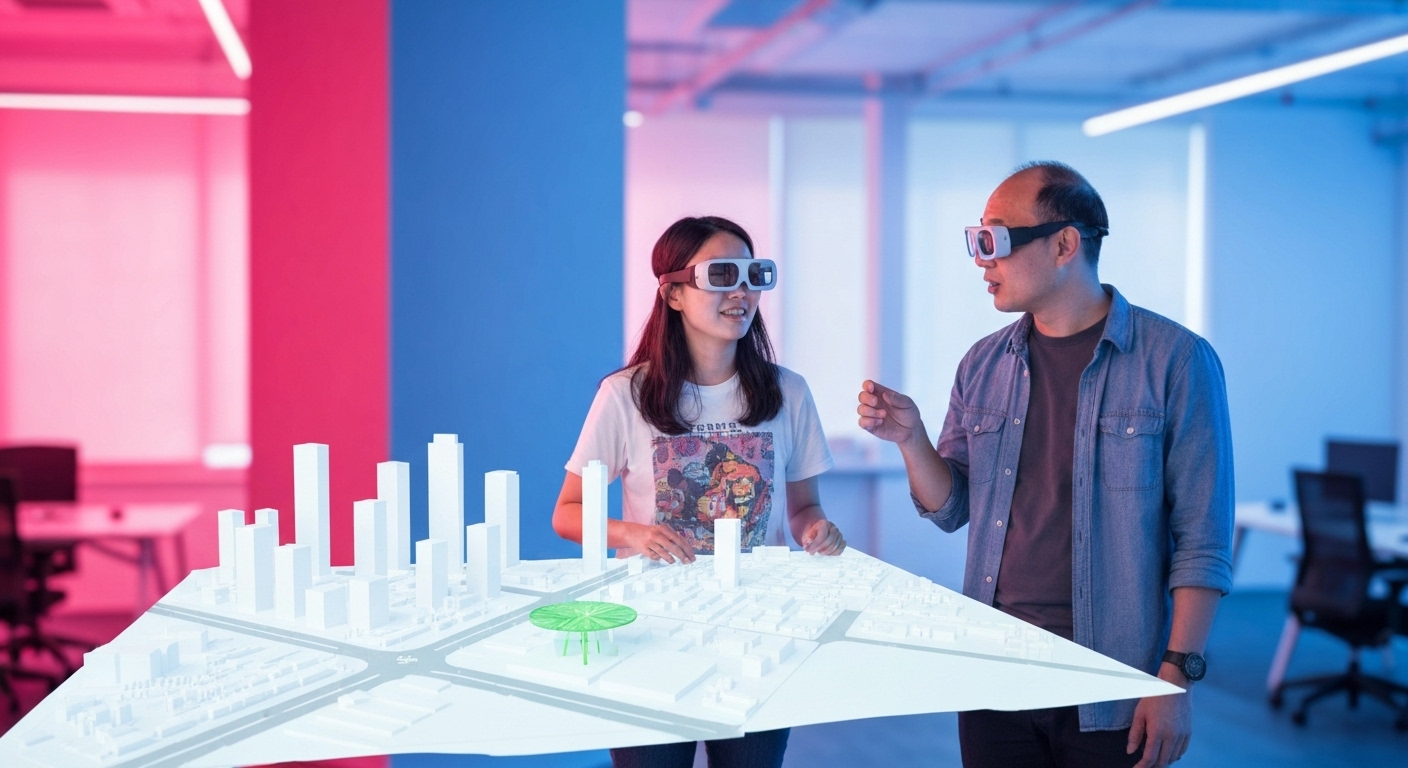AI for Creating Dynamic User Interfaces : A Comprehensive Guide
AI for creating dynamic user interfaces is rapidly transforming the way applications are designed and experienced. By leveraging artificial intelligence, developers can create interfaces that adapt to individual user behavior, preferences, and needs, resulting in a more personalized and engaging user experience.

Understanding Dynamic User Interfaces
A dynamic user interface (UI) is one that changes its layout, content, and functionality based on various factors such as user input, device type, and real-time data. Unlike static UIs, which remain the same regardless of the user, dynamic UIs offer a tailored experience that can improve user satisfaction and engagement.

Benefits of Dynamic UIs
- Personalized Experience: Dynamic UIs adapt to individual user preferences, providing a customized experience.
- Improved User Engagement: By offering relevant content and functionality, dynamic UIs keep users engaged and motivated.
- Enhanced Accessibility: Dynamic UIs can adjust to different screen sizes and accessibility needs, making applications more inclusive.
- Increased Efficiency: By streamlining workflows and providing relevant information, dynamic UIs can improve user efficiency.
- Better Conversion Rates: Personalized and engaging experiences can lead to higher conversion rates for businesses.
These benefits make dynamic UIs a valuable asset for businesses looking to improve their user experience and achieve their business goals. Dynamic UIs also allows for A/B testing which can provide additional insights for conversion rate optimization.
The Role of AI in Dynamic UI Creation
Artificial intelligence plays a crucial role in enabling dynamic user interfaces. AI algorithms can analyze user data, identify patterns, and predict user behavior, allowing developers to create UIs that respond intelligently to user needs.

Machine Learning for UI Personalization
Machine learning (ML) algorithms can be used to personalize UIs based on user behavior. For example, ML models can analyze user interaction data to identify the features and content that are most relevant to each user. This information can then be used to customize the UI, displaying the most relevant information and features first.
Consider a scenario where an e-commerce website uses machine learning to analyze a user’s past purchases and browsing history. Based on this data, the website can dynamically adjust the homepage to showcase products that the user is likely to be interested in. This personalized approach can significantly increase the chances of a sale.
AI-Powered Content Recommendation
AI can also be used to recommend content to users based on their interests and preferences. By analyzing user data, AI algorithms can identify the content that is most likely to be relevant to each user. This can be particularly useful for applications that offer a large amount of content, such as news websites, video streaming services, and online learning platforms. For example, AI algorithms can dynamically suggest articles, videos, or courses that align with the user’s interests.
AI-driven development is also gaining momentum with tools that generate UI code based on user stories and specifications, speeding up the development process.
Implementing AI-Driven Dynamic UIs
Implementing AI for creating dynamic user interfaces involves several steps, including data collection, model training, and UI integration.
Data Collection and Analysis
The first step is to collect data about user behavior, preferences, and needs. This data can be collected from various sources, such as user profiles, interaction logs, and feedback surveys. Once the data has been collected, it needs to be analyzed to identify patterns and insights. AI-powered tools can automate this process, making it easier to extract valuable information from large datasets. User behavior analysis is key to understanding how users interact with the application and identifying areas for improvement.
Model Training and Evaluation
Once the data has been analyzed, the next step is to train a machine learning model to predict user behavior. This involves selecting an appropriate ML algorithm, training it on the collected data, and evaluating its performance. There are many different ML algorithms that can be used for this purpose, such as decision trees, support vector machines, and neural networks.
Proper model training is crucial for the success of an AI-driven dynamic UI. It’s important to regularly update and retrain the models to ensure they remain accurate and relevant.
UI Integration and Testing
The final step is to integrate the trained ML model into the user interface. This involves creating a mechanism for the UI to receive predictions from the model and to dynamically adjust its layout, content, and functionality based on those predictions. Once the UI has been integrated, it needs to be thoroughly tested to ensure that it is working correctly and that it is providing a positive user experience.
This integration often requires expertise in both UI development and AI model deployment, but it is essential to creating a truly adaptive and personalized user interface.
Examples of AI in Dynamic User Interfaces
Several companies are already leveraging AI to create dynamic UIs. Here are a few examples:
- E-commerce Websites: E-commerce websites use AI to personalize product recommendations, search results, and promotional offers based on user behavior.
- Social Media Platforms: Social media platforms use AI to personalize news feeds, content suggestions, and ad targeting based on user interests.
- Mobile Apps: Mobile apps use AI to personalize notifications, feature recommendations, and user onboarding experiences based on user activity.
- Streaming Services: Streaming services use AI to personalize movie and TV show recommendations based on viewing history and preferences.
These examples demonstrate the potential of AI to transform user experiences across various industries. AI-powered UI is becoming increasingly prevalent as businesses seek to differentiate themselves and provide more value to their customers.
Challenges and Considerations
While AI offers significant advantages for creating dynamic UIs, there are also challenges and considerations to keep in mind.
Data Privacy and Security
Collecting and analyzing user data raises concerns about data privacy and security. It’s crucial to implement robust security measures to protect user data and to comply with data privacy regulations, such as GDPR and CCPA. Transparency is also essential; users should be informed about how their data is being used and given the option to control their privacy settings. You can read more on the National Institute of Standards and Technology about data privacy frameworks.
Bias and Fairness
AI models can perpetuate biases present in the training data, leading to unfair or discriminatory outcomes. It’s important to carefully evaluate the training data for biases and to use techniques to mitigate them. Regular monitoring and auditing of AI models can help ensure fairness and prevent unintended consequences. Consideration to fairness in the UIs, especially in sensitive areas is something that needs to be considered.
Explainability and Transparency
Some AI models, such as deep neural networks, can be difficult to interpret, making it challenging to understand why they make certain predictions. This lack of explainability can be a problem, especially in applications where transparency is important. Techniques for improving the explainability of AI models, such as explainable AI (XAI), can help address this issue.
The Future of AI in User Interface Design
The future of AI in UX design looks promising, with AI poised to play an even greater role in shaping user experiences. As AI technology continues to evolve, we can expect to see more sophisticated and personalized dynamic UIs that seamlessly adapt to user needs. Generative AI for UI is an emerging field that could revolutionize UI design by automatically creating UI elements and layouts based on user requirements.

Advancements in AI Algorithms
Future advancements in AI algorithms will enable even more sophisticated dynamic UIs. For example, researchers are developing new algorithms that can learn from user feedback in real-time, allowing UIs to continuously adapt and improve over time. These advancements will lead to more intuitive and engaging user experiences.
Integration with Emerging Technologies
AI will also be increasingly integrated with other emerging technologies, such as virtual reality (VR), augmented reality (AR), and the Internet of Things (IoT). This integration will create new opportunities for dynamic UIs to enhance user experiences in these environments. For example, AI-powered VR interfaces can adapt to the user’s movements and interactions, providing a more immersive and natural experience.
Conclusion
AI for creating dynamic user interfaces represents a significant advancement in UI design. By leveraging artificial intelligence, developers can create interfaces that adapt to individual user behavior, preferences, and needs, resulting in a more personalized and engaging user experience. While there are challenges and considerations to keep in mind, the potential benefits of AI-driven dynamic UIs are significant. As AI technology continues to evolve, we can expect to see even more innovative and impactful applications of AI in user interface design. For more insights into enhancing user interfaces, consider exploring flashs.cloud.
Ultimately, the goal of AI-driven dynamic UIs is to create interfaces that are intuitive, efficient, and enjoyable to use. By focusing on the user and leveraging the power of AI, we can create experiences that delight and empower users.
HOTLINE
+84372 005 899


